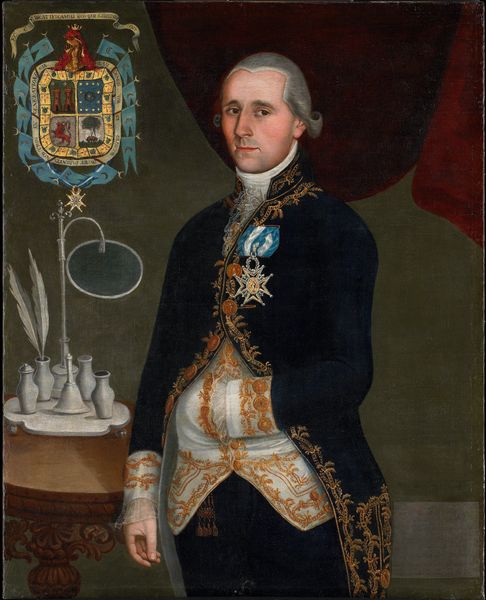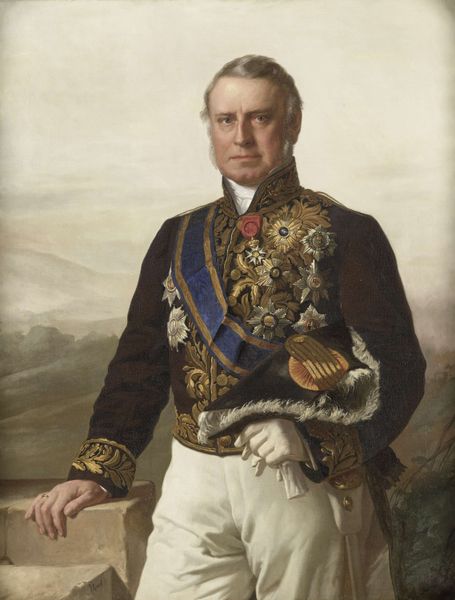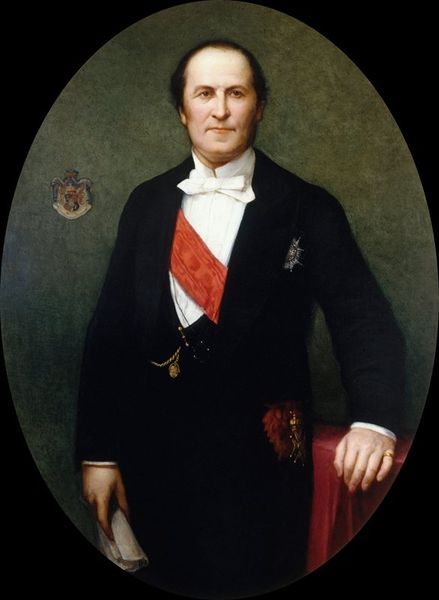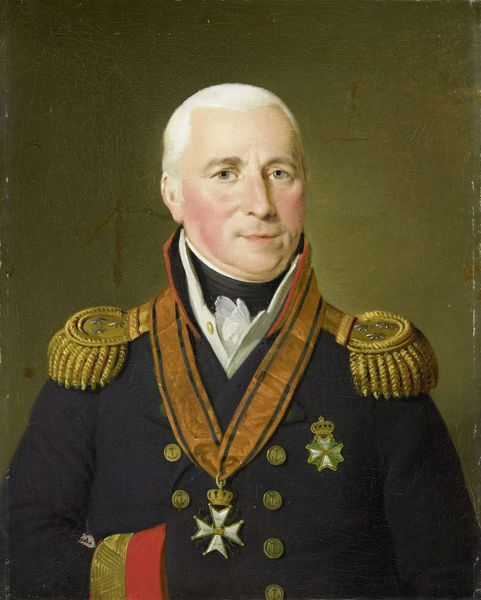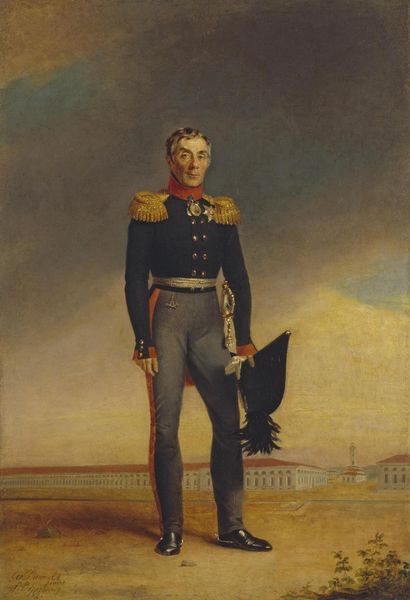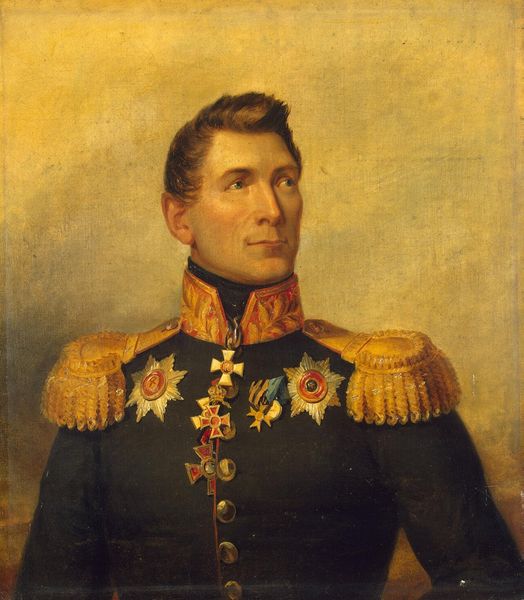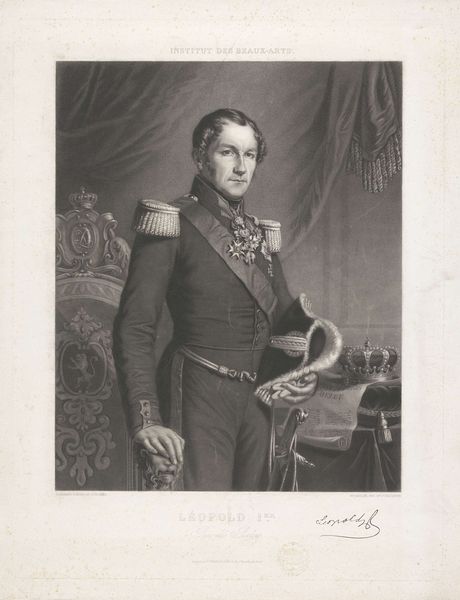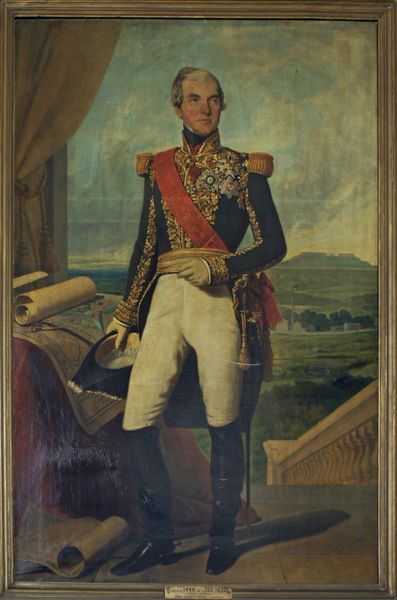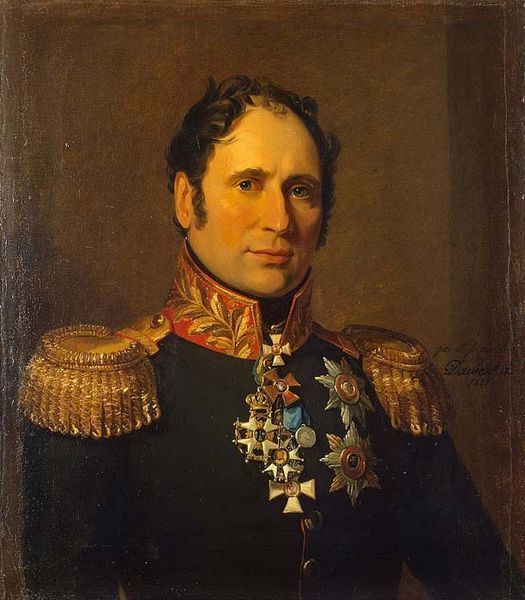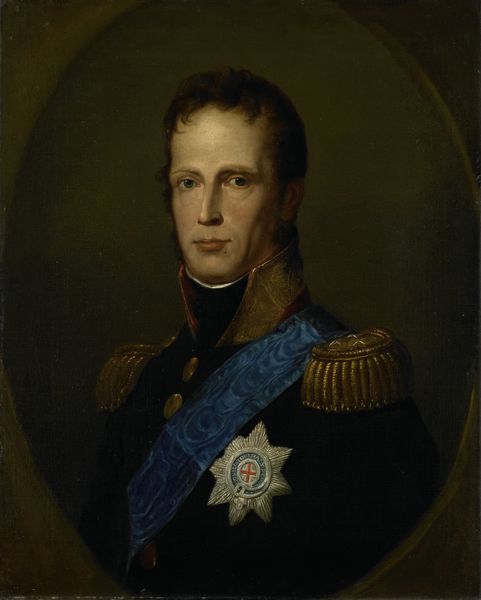
Jonkheer Theodorus Frederik van Capellen (1762-1824), Vice Admiral 1817
0:00
0:00
cornelisvaniicuylenburgh
Rijksmuseum
oil-paint
#
portrait
#
neoclacissism
#
oil-paint
#
oil painting
#
academic-art
Dimensions: height 145 cm, width 111 cm
Copyright: Rijks Museum: Open Domain
Curator: This is a striking portrait of Jonkheer Theodorus Frederik van Capellen, a Vice Admiral, painted in 1817 by Cornelis van Cuylenburgh. Editor: The immediate impression is one of restrained power, wouldn't you say? The muted palette, the upright posture, it exudes authority. Curator: Indeed. Van Capellen lived during a tumultuous period in Dutch history, marked by colonial ambitions and naval power, and his role in those endeavors cannot be ignored. His achievements are part of a complex legacy that includes involvement in both the suppression of the slave trade and commanding ships crewed by enslaved laborers. This context is crucial for any meaningful interpretation of the artwork. Editor: Agreed. However, let's not overlook the meticulous details of his uniform – the precision of the braiding, the gleam of the medals, and the deliberate arrangement of the sash. These elements create a very particular visual language. Note, too, the subtle chiaroscuro effect across his face which serves to highlight his resolve. Curator: His gaze, combined with the symbols around him—the globe, the map, the telescope—suggest a man of vision, of strategic importance in expanding Dutch power, but they are visual signifiers we need to critically examine through a post-colonial lens. This portrait operates as a statement of power in the global theater of the 19th century. Editor: Precisely, and the geometric composition further reinforces that power. The lines formed by the chair, the table, and his own body create a series of triangles that anchor him firmly in the visual space. His physical position underscores not only his stature, but speaks to how such dominance relies on principles of perspective. Curator: Placing Van Capellen and his actions into the complex realities of naval and colonial dynamics asks us to investigate not only the historical conditions, but how such legacies inform social structures still today. It serves as a necessary, and important confrontation with history. Editor: From a formal perspective, the painting achieves a compelling sense of balance and order which are undeniable visual facts, no matter one's sociohistorical outlook. It's this tension between what is shown, and what cannot be fully seen that defines the portrait’s intrinsic aesthetic power.
Comments
No comments
Be the first to comment and join the conversation on the ultimate creative platform.
